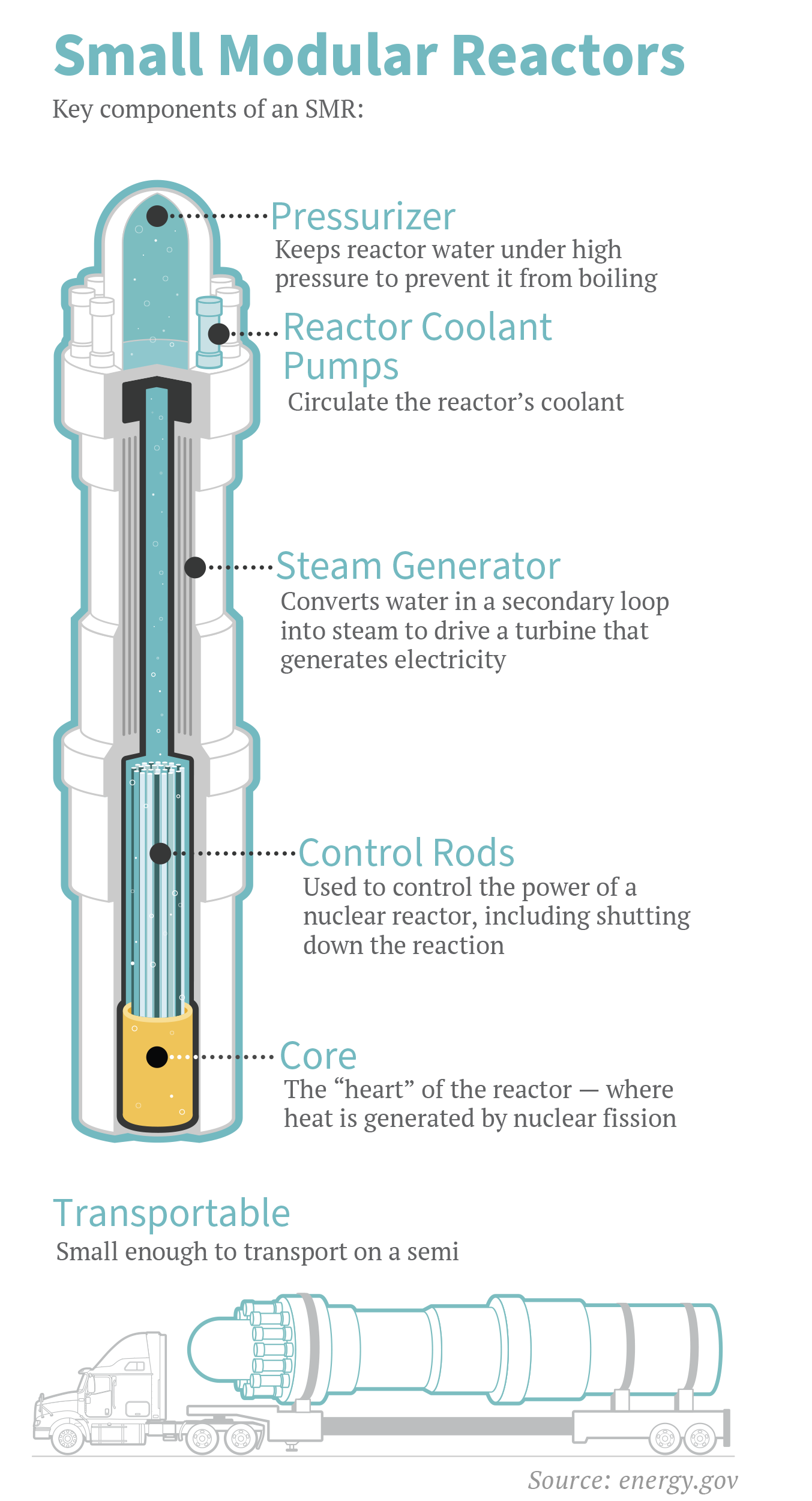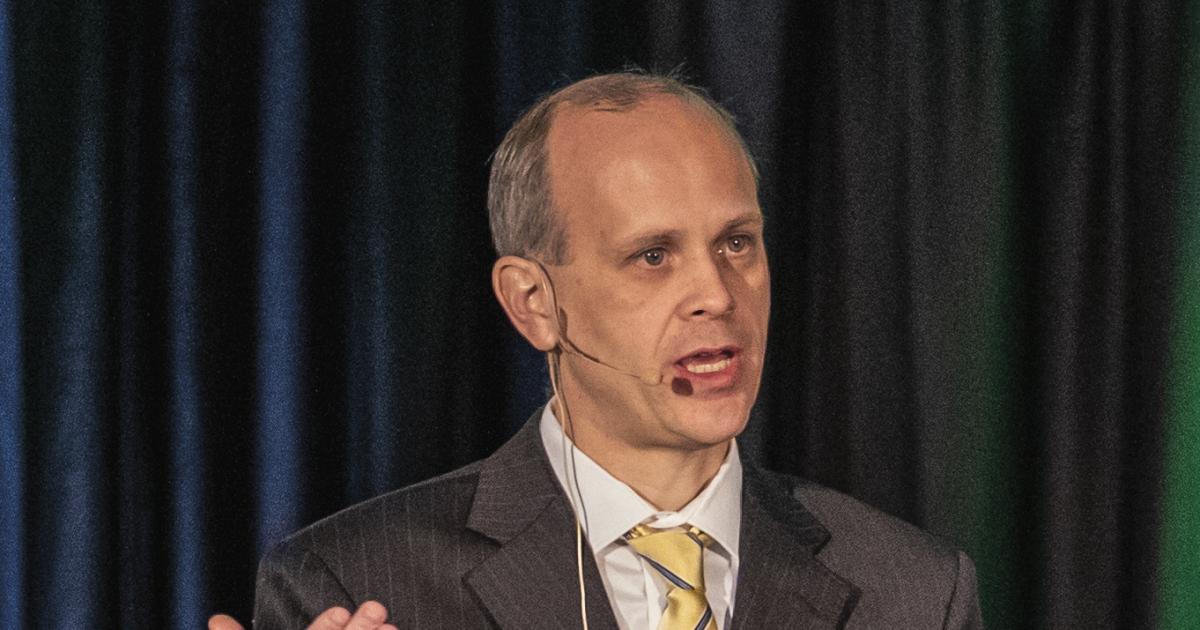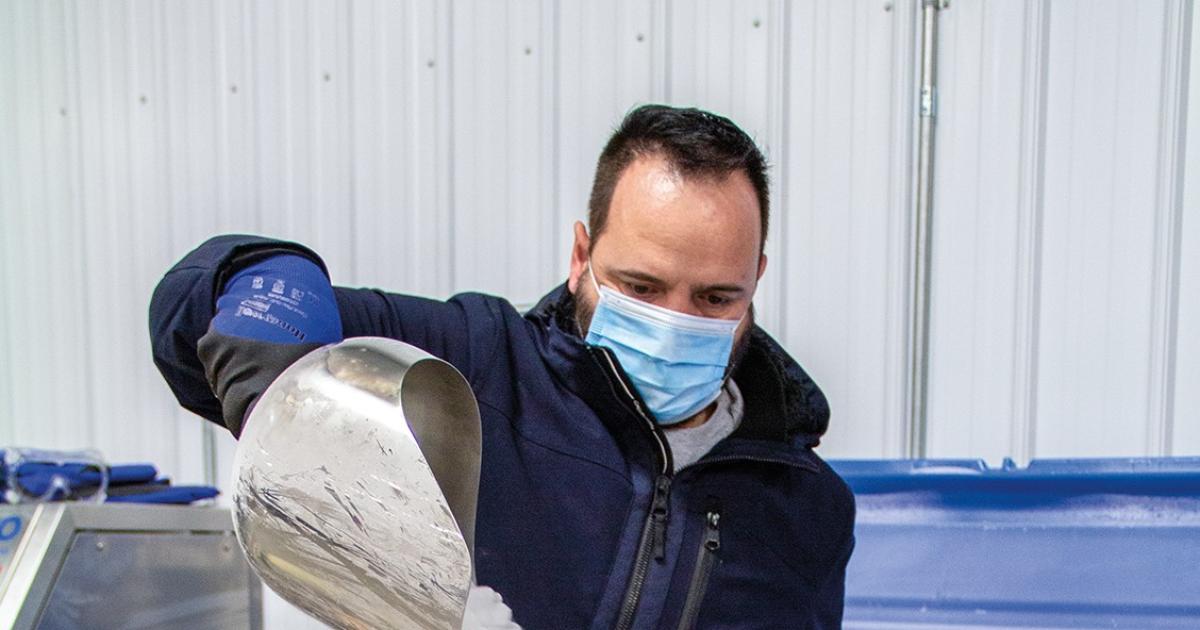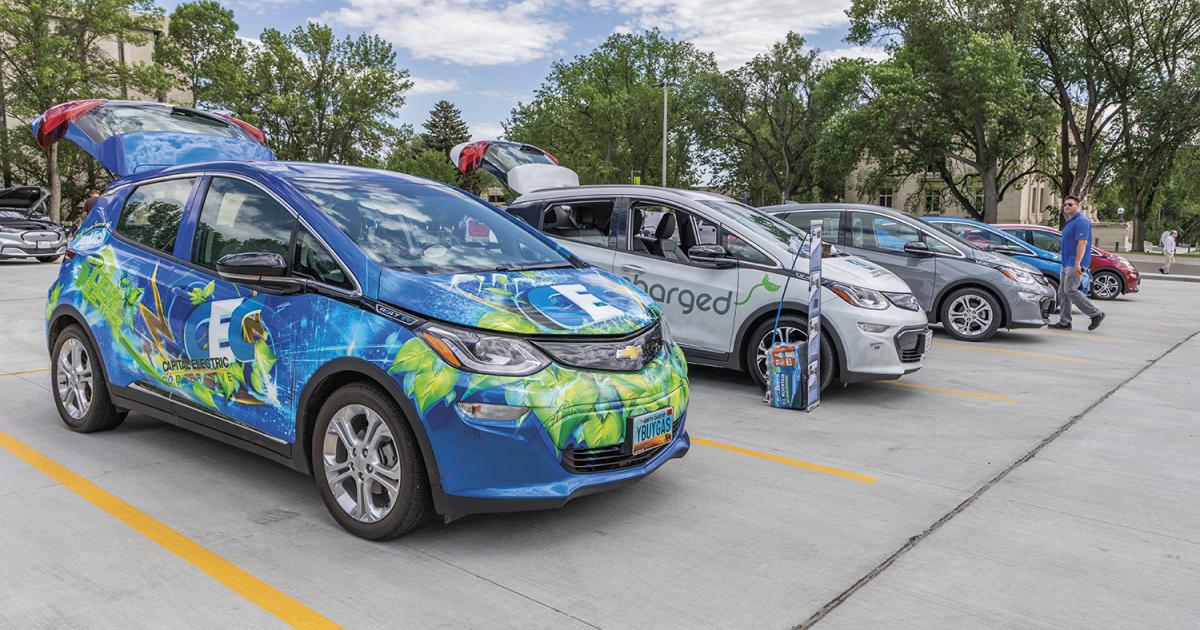Marcus Nichol, senior director of new reactors at the Nuclear Energy Institute, speaks to electric cooperative leaders about nuclear energy and advanced reactors at the North Dakota Association of Rural Electric Cooperatives annual meeting in Bismarck on Feb. 8. PHOTO BY NDAREC/LIZA KESSEL
 |
Americans have mixed views on nuclear energy.
A January 2022 Pew Research Center study found a third of U.S. adults (35%) say the federal government should encourage the production of nuclear power, about a quarter (26%) say the government should discourage it and 37% are on the fence, saying the federal government should neither encourage, nor discourage, nuclear power production. In an April 2021 Pew study, half of U.S. adults favored expanding nuclear power plants in the country to generate electricity, while 47% opposed it.
For some, nuclear power production invokes fear.
“A lot of it has come out of Hollywood. You can look at the ‘Simpsons.’ You can look at ‘The China Syndrome’ way back in the 1970s. There is almost this mythology created about nuclear being unsafe,” says Marcus Nichol, senior director of new reactors at the Nuclear Energy Institute.
The public also remembers nuclear accidents at Three Mile Island in 1979, Chernobyl in 1986 and Fukushima in 2011. Yet, only the Chernobyl disaster tallied a death toll – fewer than 50 deaths, as of mid-2005, according to the United Nations.
“Nuclear is one of the safest industries in the entire world. That is fact,” Nichol says. “If you look at the number of deaths and industries, that’s certainly true.”
While the public perception remains mixed, interest in nuclear energy and advanced nuclear technologies is growing. Small modular reactors (SMRs) offer the potential of providing scalable, carbon-free, reliable baseload power in a footprint the size of a traditional coal-fired plant or smaller. Plus, advances in design and fuel technology make SMRs safer and easier to operate. Governments, countries and utilities all over the world are trending toward nuclear energy and advanced reactors, Nichol says, for decarbonization, reliability and energy security.
DECARBONIZATION
As the United States moves to a carbon-constrained future, many recognize nuclear energy as a way to get to net zero.
Not only does nuclear have one of the lowest carbon footprints, next to wind, but it is the only zero-carbon energy source that can also produce heat, Nichol says.
In 2020, U.S. nuclear power plants avoided the emission of more than 471 million metric tons of carbon dioxide, according to the Nuclear Energy Institute.
But to meet lofty carbon-reduction goals – like President Joe Biden’s carbon-free power sector by 2035 and net zero emissions economy by 2050 – the technology must be deployable.
Nichol says a number of next-generation nuclear projects are expected to be online by 2030, with dozens of gigawatts online by 2035. The next step will be working to get the “fast followers” online, following the leading projects.
“Timing is really important,” Nichol says. “The policies have set up this transition to a zero-carbon energy system. The incentives are there. It’s going to start happening quickly, so time-to-market and speed of deployment is really important.”
Can it be done by 2035?
“It’s going to be extremely challenging, doing it by 2050 is more realistic,” he says. “The key is (the carbon-reduction goals) don’t drive us to the wrong decisions. Don’t ignore nuclear because the technology doesn’t achieve large-scale deployment by 2035, and then find out you’ve made the wrong decisions based on an unrealistic goal.”
RELIABILITY
Similar cautionary warnings have been expressed by utility industry leaders with the transition to less reliable energy sources and the “disorderly” retirement of existing generation sources.
“According to the North American Electric Reliability Corporation, a not-for-profit entity with regulatory authority over reliability and security of the grid, the ‘disorderly’ retirement of existing generating assets is directly impacting reliability. Many generation assets taken offline in recent years have been replaced with sources providing less capacity, no capacity or capacity that’s intermittent and not always available. Reliability has been threatened as a result,” states the National Rural Electric Cooperative Association, the national trade association for more than 900 electric cooperatives in the United States.
The grid still requires reliable baseload generation that doesn’t depend on the wind blowing or the sun shining, and extreme weather events provide frequent validation of the need for baseload resources, including coal and nuclear.
Nichol says nuclear is a clear choice when considering reliability, and applications exist for both large and small electric grids, and for industrial uses. Microreactors, about one to 10 megawatts in design, can be used to serve remote areas and are being designed for grid reliability and resilience.
“Some electric providers see micro nuclear as a way to improve resilience at their end of the transmission line, far away from the generating source. It’s a good way to add resilience in far-off places,” he says. And it’s an efficient use of transmission. “Because nuclear is such an energy-dense technology, the transmission can be more centralized and minimized.”
Additionally, in other states, there is interest in studying whether retired coal plants could be transitioned to advanced nuclear generating sites. SMRs provide another option to ensure 24/7 electric grid reliability.
“If a coal plant does close, there is a question of how do you replace that power. What we’ve seen from some coal closures, local communities are entirely dependent on that coal plant. There’s a lot of concern about that. Not only how do we replace power, but also how do we preserve jobs and local economies?” Nichol says.
There are many similarities between coal and nuclear facilities, he says. Like coal, nuclear can be produced on relatively small parcels of land, and advanced nuclear technologies can be scaled to match capacity and power output of a plant.
“Major decisions will be made for the grid over the next five to 10 years. You have to look at that with the end in mind, considering the end cost and reliability,” he says. “Nuclear affordability is clear when considering reliability.”
ENERGY SECURITY
The other trend in the industry, Nichol says, can be attributed to Russia’s invasion of Ukraine, which signaled to the rest of the world the need for energy security. Countries are increasingly concerned about where their energy supply is coming from and the potential for disruptions.
“The war in Ukraine is putting a large focus on nuclear, because (nuclear) performs so well for energy security,” Nichol says. “Since the war in Ukraine, we are talking to more countries and utilities in Europe that really want to deploy advanced reactors, and they are moving forward very quickly.”
Belgium, in the wake of the February 2022 Russian invasion of Ukraine, for example, extended the operation of its retiring nuclear plants to 2035 and is interested in SMRs as a deployable future technology.
“We’re even seeing countries like Japan having a shift in the policy. Advanced nuclear is part of the future of Japan. The entire world is really moving toward advanced nuclear,” he says.
NUCLEAR ATTENTION
Nuclear technologies are also gaining attention from electric cooperatives across the country.
Glenn Mitzel, chair of the Cass County Electric Cooperative board of directors in Fargo, says cooperatives must weigh the concerns and learn from the mistakes of the past.
“Three Mile Island was a very bad day. Chernobyl was a lot of human mistakes made by not-so-great operators. Fukushima was a natural disaster that we didn’t plan for as engineers well enough. Those concerns are real, and you have to address them,” says Mitzel, who has a background in nuclear plant operations and nuclear design. “The next concern is always long-term waste storage and that, too, is real. Yet, we’ve learned a ton.”
Careful considerations will be made as electric cooperatives plan to meet the future energy needs of their members.
“Ultimately, it comes down to everything we talk about as a cooperative today – safe, affordable, reliable. If we can do nuclear meeting those three criteria, yeah, we go with it. If we can’t, if we fail one of those miserably, it’s not a good option,” he says. “But at this point, I don’t think we’re in a position where we can throw anything away and not run it as an option.”
Mitzel falls into the category of neither encouraging, nor discouraging, nuclear power production, at least not in his capacity as an electric cooperative director. But, as a lifelong learner, he would welcome an information-gathering process, with local feasibility studies and public input, to further explore nuclear energy opportunities in North Dakota.
“If the (generation and transmission cooperatives) want to investigate (nuclear), let’s do an honest, hard look at an honest possible solution. And if it doesn’t work, at least we have an answer and why,” he says.
___
Cally Peterson is editor of North Dakota Living. She can be reached at cpeterson@ndarec.com.










